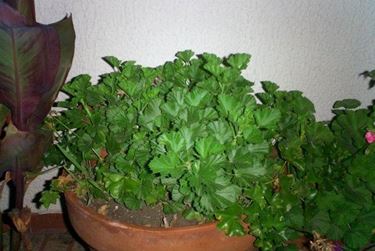Contents
geraniums in winter
Geraniums in winter must be protected from the cold. At the start of the fall season, with the first cold spells, watering should be reduced. The plant goes through a period of vegetative rest, transpiration slows down due to the decrease in external heat, so it does not need a lot of water. Fertilization should also be reduced. During the first cold spells, it is advisable to place the plants in sheltered and bright places. To avoid excessive root cooling, straw can be placed around the main stem (mulch). It is advisable to reduce the length of the branches, making a good pruning, especially for adult plants. This will prevent the branches from stretching too far. It is advisable to spray a fungicide on the plant, to prevent the formation of mold.

Cultivation of geranium
 Geraniums (botanical name pelargonium) are very popular indoor plants. Native to South Africa, they have a wide variety of species, grouped according to their growth characteristics. We distinguish zonal geraniums, ivy geraniums, imperial geraniums, Parisian geraniums, etc. with different characteristics in terms of stem, leaves, flowers. Some species grow well in the open ground and have a bushy form (especially common in areas with a temperate climate), others fall in long flowering cascades on balconies and terraces. All species, however, have a common characteristic, they like heat and fear frost. Geraniums should be protected in winter, especially those growing in areas where winter temperatures drop below 10 degrees, with the possibility of overnight frosts.
Geraniums (botanical name pelargonium) are very popular indoor plants. Native to South Africa, they have a wide variety of species, grouped according to their growth characteristics. We distinguish zonal geraniums, ivy geraniums, imperial geraniums, Parisian geraniums, etc. with different characteristics in terms of stem, leaves, flowers. Some species grow well in the open ground and have a bushy form (especially common in areas with a temperate climate), others fall in long flowering cascades on balconies and terraces. All species, however, have a common characteristic, they like heat and fear frost. Geraniums should be protected in winter, especially those growing in areas where winter temperatures drop below 10 degrees, with the possibility of overnight frosts.
Cultivation and care of geranium
 Geranium is an annual plant, it grows in dry, well-drained soils exposed to the sun, although geraniums do well in semi-shaded areas. During the summer season, when the temperature is higher, it needs abundant watering, although it is good to avoid water stagnation so as not to rot the roots. It is best to water during the afternoon hours, never during the hottest hours of the day. Fertilizations must be carried out regularly, every 15 days, during the growth period. It is advisable to use specific, liquid or slow release fertilizers diluted in water, not too rich in nitrogen and with a good percentage of potassium which stimulates the production of flowers. In summer, fertilization should be diluted. It multiplies by seed or more frequently by cuttings (in late summer).
Geranium is an annual plant, it grows in dry, well-drained soils exposed to the sun, although geraniums do well in semi-shaded areas. During the summer season, when the temperature is higher, it needs abundant watering, although it is good to avoid water stagnation so as not to rot the roots. It is best to water during the afternoon hours, never during the hottest hours of the day. Fertilizations must be carried out regularly, every 15 days, during the growth period. It is advisable to use specific, liquid or slow release fertilizers diluted in water, not too rich in nitrogen and with a good percentage of potassium which stimulates the production of flowers. In summer, fertilization should be diluted. It multiplies by seed or more frequently by cuttings (in late summer).
Winter geraniums: diseases and pests of geraniums.
 To keep them beautiful and lush, geraniums must be treated with the utmost care. Careful cleaning should be carried out periodically, with the removal of dead or damaged leaves, detached with the entire petiole. Wilted flowers are removed, together with the stem, and the branches are pruned, to facilitate the opening of the lateral buds and to have a more branched plant rich in flowers. Geraniums, like all plants, can get sick and be attacked by pests. The most common disease is root rot, caused by excessive watering. It heals by reducing the amount of water. The plant should be watered only when the soil is completely dry. Another widespread disease is due to the presence of molds, typical are rust and gray mold which are treated with specific products.
To keep them beautiful and lush, geraniums must be treated with the utmost care. Careful cleaning should be carried out periodically, with the removal of dead or damaged leaves, detached with the entire petiole. Wilted flowers are removed, together with the stem, and the branches are pruned, to facilitate the opening of the lateral buds and to have a more branched plant rich in flowers. Geraniums, like all plants, can get sick and be attacked by pests. The most common disease is root rot, caused by excessive watering. It heals by reducing the amount of water. The plant should be watered only when the soil is completely dry. Another widespread disease is due to the presence of molds, typical are rust and gray mold which are treated with specific products.